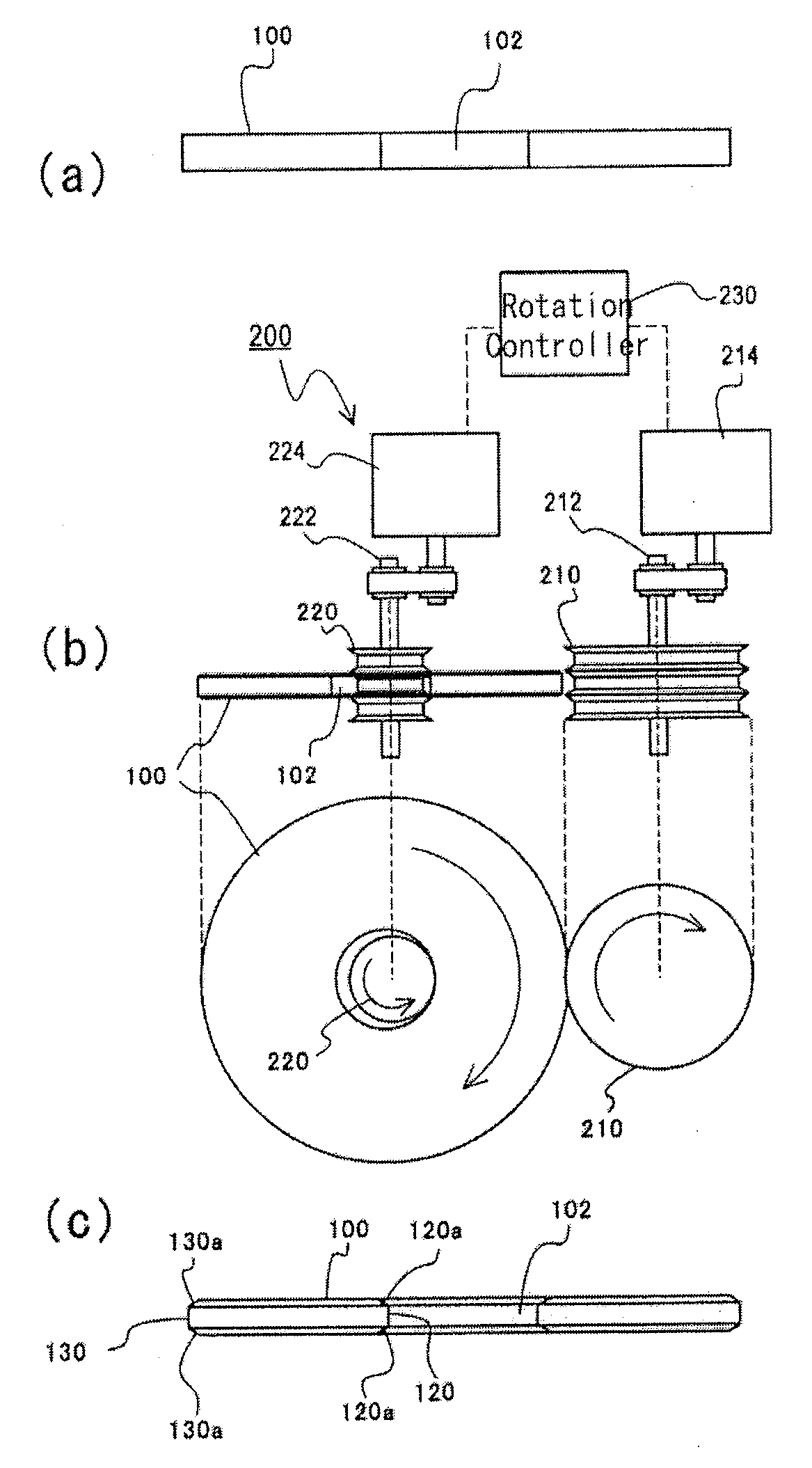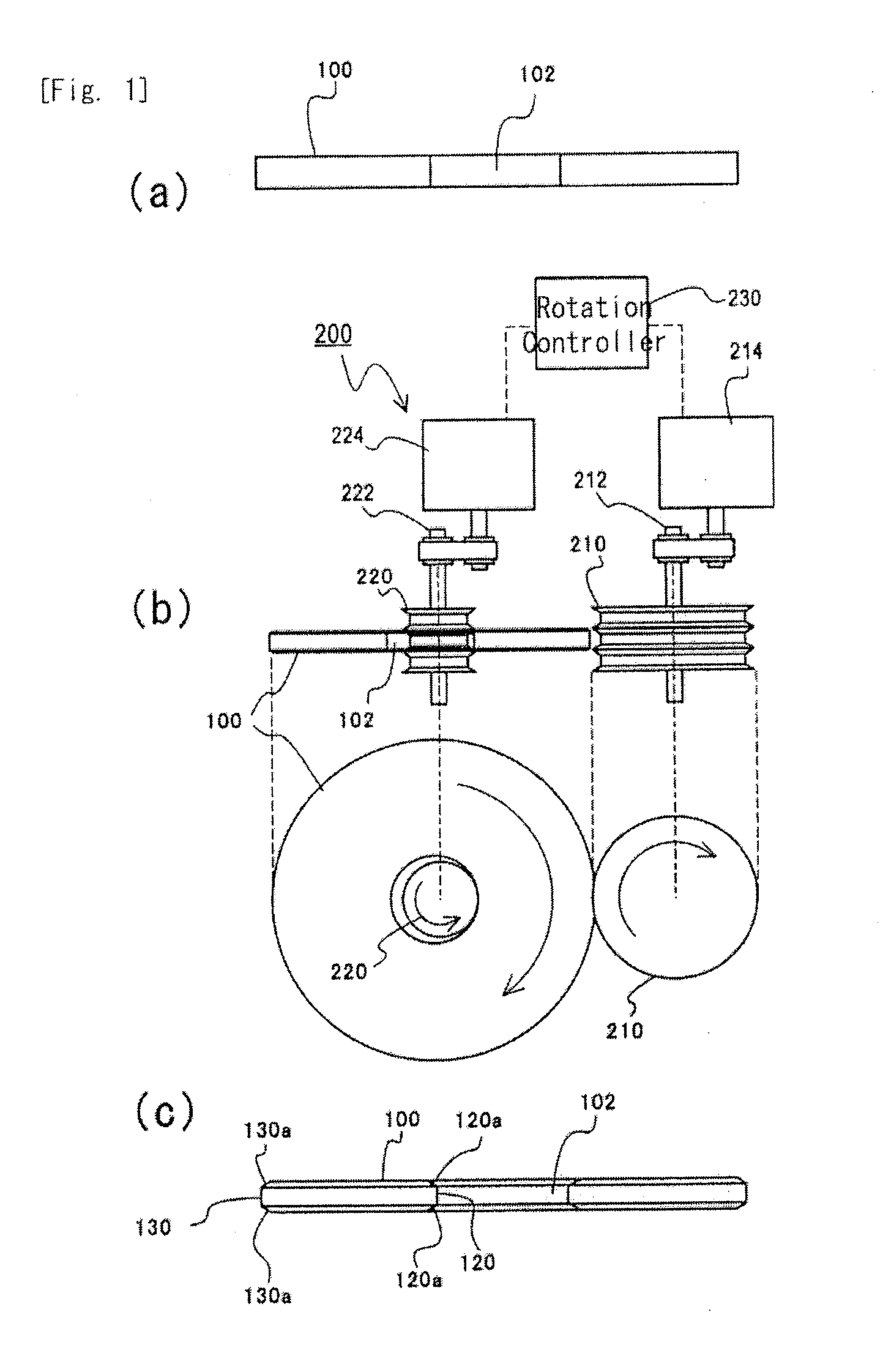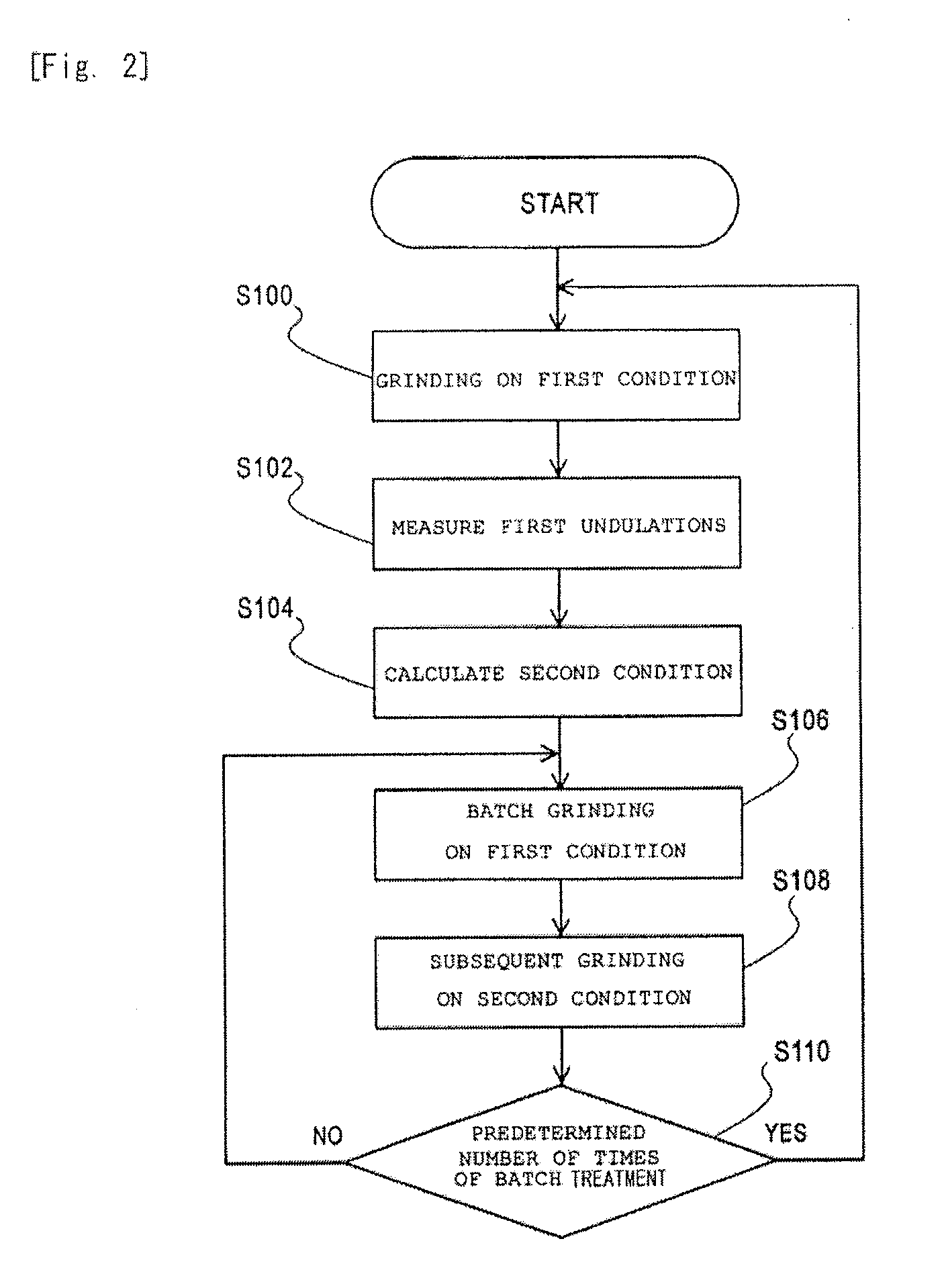Method for manufacturing a glass substrate for a magnetic disc
a technology of magnetic discs and glass substrates, which is applied in the manufacture of base layers, edge grinding machines, manufacturing tools, etc., can solve the problems of thermal asperity failure, defective films, and inability to obtain proper glide height, etc., and achieve short processing time, high roundness, and short processing time
- Summary
- Abstract
- Description
- Claims
- Application Information
AI Technical Summary
Benefits of technology
Problems solved by technology
Method used
Image
Examples
working example
[0076]Hereinafter, an embodiment will be described below about a method for manufacturing a glass substrate for a magnetic disc to which the invention is applied.
(1) Shaping Step And First Lapping Step
[0077]Although materials for a glass substrate in this embodiment include soda lime glass, aluminosilicate glass, borosilicate glass, crystallized glass, etc., aluminosilicate glass is especially suitable. Since smoothness and high rigidity are obtained in the aluminosilicate glass, magnetic spacing, especially the floating height of a magnetic head can be reduced more stably. Additionally, in the aluminosilicate glass, high rigidity and strength can be obtained by chemical strengthening.
[0078]First, melted aluminosilicate glass was molded into a disc shape by direct pressing using an upper mold, a lower mold, and a barrel mold, and amorphous plate-like glass was obtained. In addition, glass for chemical strengthening was used as the aluminosilicate glass. A disc-like glass substrate f...
PUM
| Property | Measurement | Unit |
|---|---|---|
| floating height | aaaaa | aaaaa |
| time | aaaaa | aaaaa |
| Ra | aaaaa | aaaaa |
Abstract
Description
Claims
Application Information
 Login to View More
Login to View More - R&D
- Intellectual Property
- Life Sciences
- Materials
- Tech Scout
- Unparalleled Data Quality
- Higher Quality Content
- 60% Fewer Hallucinations
Browse by: Latest US Patents, China's latest patents, Technical Efficacy Thesaurus, Application Domain, Technology Topic, Popular Technical Reports.
© 2025 PatSnap. All rights reserved.Legal|Privacy policy|Modern Slavery Act Transparency Statement|Sitemap|About US| Contact US: help@patsnap.com



